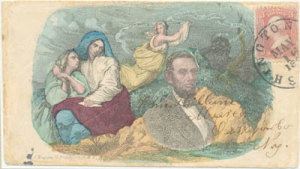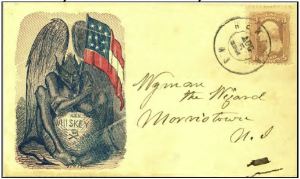

The Civil War had a greater effect on US stamps and US philately than any other event. The War caused the demonetization of all stamps that were issued before 1861. The North was concerned that US postage stamps left in Southern post offices could be smuggled north and sold for US currency to finance the Southern war effort. This was the only time in American history that US stamps were demonetized for postage. We are one of very few countries that this is true of. German stamps before the Euro can’t be used for postage, and GB stamps before decimalization can’t be used for postage. But American stamps going back 150 years are still valid to be used on US mail, if anyone were foolish enough to do so. The Civil War forced the redesign of all of the current US postage stamps and created an entirely new collecting category—the stamps of the Confederate States of America.


The Civil War’s philatelic impact extended even further than stamp issues and postal history. The South was economically devastated after the Civil War, and it was nearly thirty years before the old power structures reasserted themselves, reconstruction was overturned, and a more modern form of the antebellum social order reasserted itself in the South. Philatelists for the old Confederacy wanted no part of traditional “northern” philately and set up their own national society—The Southern Philatelic Association (SPA)—as a counterweight to the American Philatelic Society. The SPA only changed its name to the Society of Philatelic Americans after WWII.


Most young Americans grow up with a sense that the Civil War was fought to settle the issues of slavery, states rights, and Federalism and that those issues were resolved once and for all in 1865. Philatelists know that wars resolve territorial disputes; they don’t alter people’s views nor change their minds. We are less two nations now perhaps than we were in 1861, but we still have a long way to go. If you doubt that and want proof in the philatelic world, look at the issues currently coming out to commemorate the 150th anniversary of the Civil War. The war killed over 10% of the male population of conscription age—a terrible carnage—and caused the devastation of the South from which it took over fifty years to recover. And yet the stamps that are issued now to commemorate the War are so mild as to suggest the war was a disagreement among friends. Denial is not what a people who have solved their problem need to engage in.
